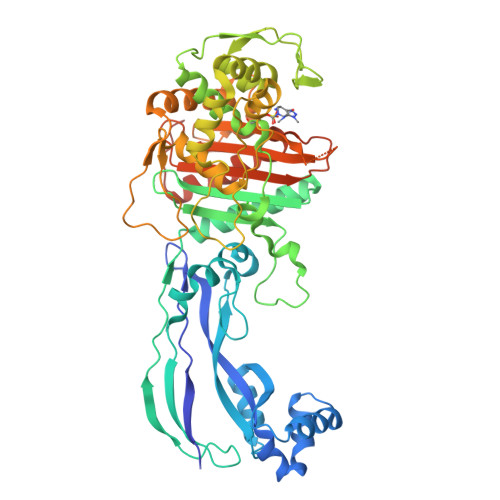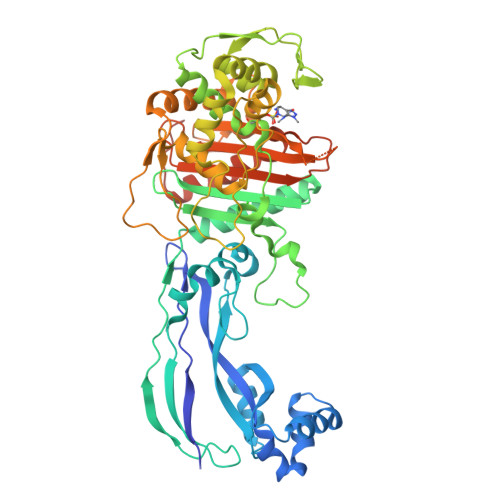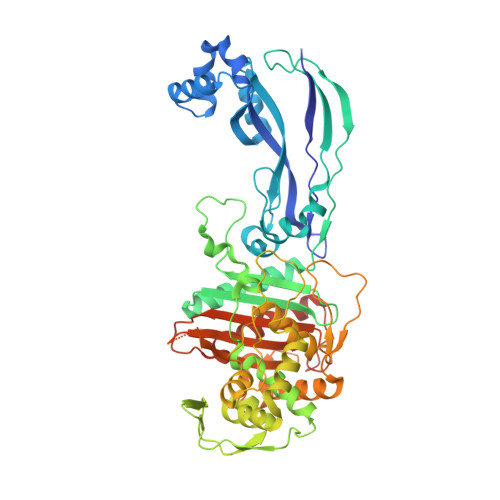Rational design of a new antibiotic class for drug-resistant infections.
Durand-Reville, T.F., Miller, A.A., O'Donnell, J.P., Wu, X., Sylvester, M.A., Guler, S., Iyer, R., Shapiro, A.B., Carter, N.M., Velez-Vega, C., Moussa, S.H., McLeod, S.M., Chen, A., Tanudra, A.M., Zhang, J., Comita-Prevoir, J., Romero, J.A., Huynh, H., Ferguson, A.D., Horanyi, P.S., Mayclin, S.J., Heine, H.S., Drusano, G.L., Cummings, J.E., Slayden, R.A., Tommasi, R.A.(2021) Nature 597: 698-702
- PubMed: 34526714
- DOI: https://doi.org/10.1038/s41586-021-03899-0
- Primary Citation of Related Structures:
7JWL - PubMed Abstract:
The development of new antibiotics to treat infections caused by drug-resistant Gram-negative pathogens is of paramount importance as antibiotic resistance continues to increase worldwide 1 . Here we describe a strategy for the rational design of diazabicyclooctane inhibitors of penicillin-binding proteins from Gram-negative bacteria to overcome multiple mechanisms of resistance, including β-lactamase enzymes, stringent response and outer membrane permeation. Diazabicyclooctane inhibitors retain activity in the presence of β-lactamases, the primary resistance mechanism associated with β-lactam therapy in Gram-negative bacteria 2,3 . Although the target spectrum of an initial lead was successfully re-engineered to gain in vivo efficacy, its ability to permeate across bacterial outer membranes was insufficient for further development. Notably, the features that enhanced target potency were found to preclude compound uptake. An improved optimization strategy leveraged porin permeation properties concomitant with biochemical potency in the lead-optimization stage. This resulted in ETX0462, which has potent in vitro and in vivo activity against Pseudomonas aeruginosa plus all other Gram-negative ESKAPE pathogens, Stenotrophomonas maltophilia and biothreat pathogens. These attributes, along with a favourable preclinical safety profile, hold promise for the successful clinical development of the first novel Gram-negative chemotype to treat life-threatening antibiotic-resistant infections in more than 25 years.
Organizational Affiliation:
Entasis Therapeutics, Waltham, MA, USA.


















